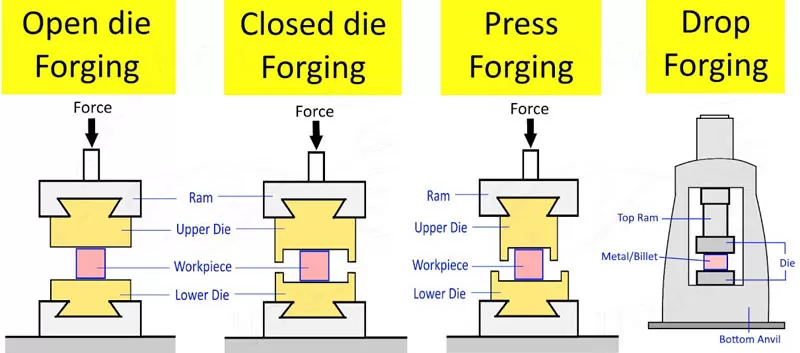Hydraulic Forging Press Application
Hydraulic forging press can also be used for general pressing process. Forging hydraulic press can add punching buffer, punching, moving worktable and other devices according to user needs. In addition to forging and forming, forging hydraulic press can also be used for correction, press fitting, packaging, pressing block and pressing plate, etc. It can also be used for the pressing process of shaft parts, the calibration, buckling and pressing process of profiles, and the bending, arguing, shaping, stamping, sleeve and stretching of sheet parts, and the pressing process of plastic materials, such as stamping, bending, flanging and thin stretching, etc. It can also be used for correction, press fitting, and pressing and forming of plastic products and powder products. Because of its wide range of applications, it is also called universal forging hydraulic press.

Hydraulic Forging Press Features
There are three main aspects of hydraulic forging presses: description, processing and manufacturing, and installation and use. Since the first two aspects are things that need to be considered during the production of equipment, they are not very meaningful to users, so today we will mainly talk about how to reduce the occurrence of this situation from the perspective of hydraulic press installation and use.
The contact surface between the flange of the hydraulic cylinder of the forging hydraulic press and the crossbeam should be in close contact with more than 80% of the area. However, due to long-term use, the accuracy of this contact surface of some hydraulic presses has been damaged, resulting in partial contact, and the supporting reaction force of the crossbeam at the partial contact point has increased sharply, resulting in early damage. Insufficient crossbeam stiffness or unreasonable placement of the rib plate at the installation of the hydraulic cylinder will also cause uneven distribution of the reaction force on the flange contact surface, resulting in excessive operating stress.
The connecting bolts between the cylinder flange and the crossbeam of the forging hydraulic press are often loose. If they are not tightened in time, the cylinder will move and collide, causing the crossbeam contact surface to continue to collapse, resulting in partial contact. It is best to tighten the connecting bolts of the Yixin air purifier when the hydraulic cylinder is pressurized. Some small hydraulic presses use a clamp or key to fasten the cylinder to the crossbeam at the bottom of the cylinder, which plays a certain role in preventing the cylinder from loosening.
The oil tank of the hydraulic forging press should be protected from freezing to prevent leakage. This is especially important in winter, and early prevention should be done. Secondly, the appropriate hydraulic oil should be replaced according to the temperature changes. The importance of hydraulic oil as a working medium to the equipment must be obvious. Finally, the lubrication of the forging hydraulic press must be in place, and lubricating oil should be added regularly to avoid damage to the hydraulic components.


 +86-769-8306-1993
+86-769-8306-1993
 E-mail
E-mail
